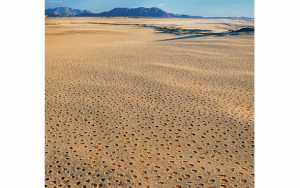Lisa Morgonelli in Scientific American:
 After I came back from Australia, I wondered about a large bauxite mine that I’d heard of, where termites had rehabilitated the land. I wondered if there was more to the story than the fact that they fertilized the soil and recycled the grasses. There seemed to be a gap between bugs dropping a few extra nitrogen molecules in their poo and the creation of a whole forest. What were they doing down there? I started going through my files, looking for people working on landscapes. This led me to the work of a mathematician named Corina Tarnita and an ecologist named Rob Pringle. When I contacted her, Corina had just moved to Princeton from Harvard and, with Rob, had set about using mathematical modeling to figure out what termites were doing in dry landscapes in Kenya. As it happened, I had interviewed Rob back in 2010, when he and a team published a paper on the role of termites in the African savanna ecosystems that are home to elephants and giraffes.
After I came back from Australia, I wondered about a large bauxite mine that I’d heard of, where termites had rehabilitated the land. I wondered if there was more to the story than the fact that they fertilized the soil and recycled the grasses. There seemed to be a gap between bugs dropping a few extra nitrogen molecules in their poo and the creation of a whole forest. What were they doing down there? I started going through my files, looking for people working on landscapes. This led me to the work of a mathematician named Corina Tarnita and an ecologist named Rob Pringle. When I contacted her, Corina had just moved to Princeton from Harvard and, with Rob, had set about using mathematical modeling to figure out what termites were doing in dry landscapes in Kenya. As it happened, I had interviewed Rob back in 2010, when he and a team published a paper on the role of termites in the African savanna ecosystems that are home to elephants and giraffes.
I took the train to Princeton to meet them in early 2014. By that time I’d been following termites for six years, and I’d pretty much given up on two ideas that motivated me early on: understanding the relation between local changes and global effects—that concept of global to local that dogs complexity theorists—and the development of technology that could potentially “save the world.” But through mathematical models, Corina and Rob and their teams eventually delivered a version of those things. And it was purely a bonus that they might have even solved the mystery of the fairy circles.
More here.
